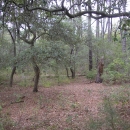About Us
Our Mission
Vision
Cedar Island National Wildlife Refuge will play a vital role in the National Wildlife Refuge System. The refuge will establish a presence in the local community by partnering with agencies, developing research groups, and organizing friends groups and volunteers. The refuge will conserve and manage fish and wildlife species, such as threatened and endangered species, species of management concern, and interjurisdictional fish. Refuge staff and volunteers will protect the diverse habitats typical of the mid-Atlantic coastal ecosystem within which the refuge is situated, including coastal fringe forest, estuarine marsh, and longleaf pine savanna and fish nursery areas. Through active enhancement and management, the refuge will provide high-quality, mid-Atlantic, coastal habitat for migratory birds and other priority species. The Service l encourages visitors to the refuge to participate in compatible wildlife-dependent recreational activities. Working with others, Cedar Island National Wildlife Refuge staff, partners, and volunteers will manage and protect the refuge’s natural resources to conserve a legacy of fish, wildlife, and plants for people to experience and appreciate in the years to come.
Refuge Purpose(s)
Each unit of the National Wildlife Refuge System is established to serve a statutory purpose that targets the conservation of native species dependent on its lands and waters. All activities on those acres are reviewed for compatibility with this statutory purpose.
The purposes of Cedar Island National Wildlife Refuge, as reflected in the legislation under which Congress authorized the refuge and the Service has acquired land, is to protect and conserve migratory birds, and other wildlife resources through the protection of wetlands, in accordance with the listed laws.
“...for use as an inviolate sanctuary, or for any other management purpose, for migratory birds..." 16 U.S.C. Sec. 664 (Migratory Bird Conservation Act of 1929);
“…for the development, advancement, management, conservation, and protection of fish and wildlife resources…” 16 U.S.C. Sec 742f(a)(4)
“…for the benefit of the United States Fish and Wildlife Service, in performing its activities and services. Such acceptance may be subject to
the terms of any restrictive or affirmative covenant, or condition of servitude…” 16 U.S.C. 742f(b)(1) (Fish and Wildlife Act of 1956).
Other Facilities in this Complex
A National Wildlife Refuge Complex is an administrative grouping of two or more refuges, wildlife management areas or other refuge conservation areas that are primarily managed from a central office location. Refuges are grouped into a complex structure structure
Something temporarily or permanently constructed, built, or placed; and constructed of natural or manufactured parts including, but not limited to, a building, shed, cabin, porch, bridge, walkway, stair steps, sign, landing, platform, dock, rack, fence, telecommunication device, antennae, fish cleaning table, satellite dish/mount, or well head.
Learn more about structure because they occur in a similar ecological region, such as a watershed or specific habitat type, and have a related purpose and management needs.
There are 9 national wildlife refuges in the Coastal North Carolina National Wildlife Refuges Complex. The Project Leader for the Complex supervises the Refuge Managers who are responsible for managing these refuges. However, there are five distinct and separate administrative offices. Alligator River and Pea Island National Wildlife Refuges are administered from the Alligator River National Wildlife Refuge Headquarters in Manteo, NC. An administrative office at the Mackay Island National Wildlife Refuge Headquarters in Knotts Island, NC manages both Mackay Island and Currituck National Wildlife Refuges. An office at Mattamuskeet National Wildlife Refuge administers Mattamuskeet, Swanquarter, and Cedar Island National Wildlife Refuges. Pocosin Lakes National Wildlife Refuge, Roanoke River National Wildlife Refuge, Great Dismal Swamp National Wildlife Refuge, Back Bay National Wildlife Refuge, and Edenton National Fish Hatchery each have separate administrative offices.
All of the Coastal North Carolina National Wildlife Refuges, Great Dismal Swamp National Wildlife Refuge, Back Bay National Wildlife Refuge, and Edenton National Fish Hatchery are open to public visits for nature-based recreational enjoyment. Priority public uses are hunting, fishing, wildlife observation, wildlife photography, environmental education, and interpretation.




